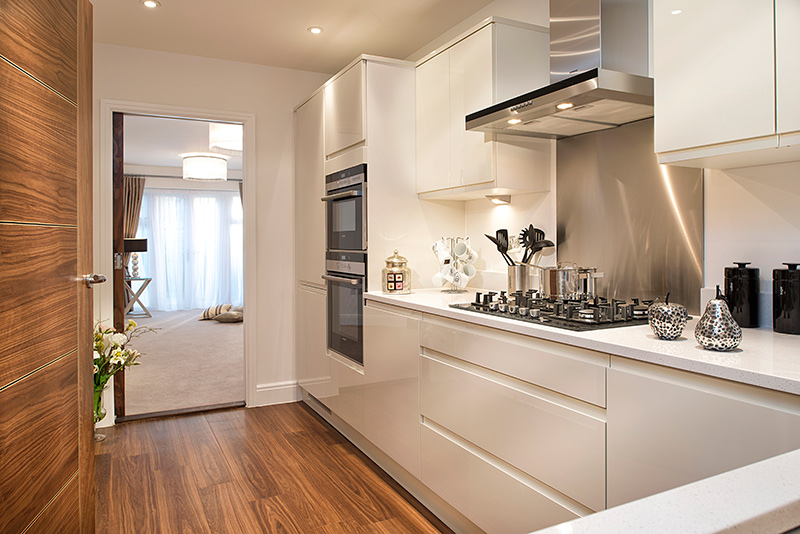Which Floor Finish with Underfloor Heating?

A commonly asked question by property owners when considering underfloor heating is ‘What floor covering can I put on top?’ The short answer is that most finishes can be used with UFH, but need to be taken into account at design stage in order to ensure that the resistance value of the chosen floor covering does not adversely affect the output of the UFH system.
In general terms, harder surfaces such as stone and ceramic are best due for use with UFH as they have the lowest thermal resistance, providing the best heat output – in contrast to coverings like deep-pile carpets and rugs which have the opposite effect.
All floor coverings have a ‘tog’ rating, a measure of resistance – which should not ideally exceed 2.5 tog (including any underlays) when used in conjunction with UFH. The floor covering is one of a few parameters taken into account at UFH design stage – other points are:
- The flow temperature supplied by the heat source (boiler, air-source heatpump etc)
- The heat loss of the area to be heated – which is calculated based on the insulation value of the building fabric and the windows/doors etc
- The room design temperature – i.e. the temperature that we would like to achieve in the area
- The floor construction and therefore the type of UFH system to be supplied
Once we have established these factors, we can then work out the required spacing of the pipework, and the rate at which the water will need to be pumped around the loops in order to meet the heat loss. Ambiente carries out all UFH designs in accordance with BS EN 1264 and CIBSE guidelines. It is important that we are made aware of the proposed floor coverings in each area of the property, ahead of the UFH designs being produced. We can then factor the resistance of the chosen coverings into our designs to make sure that we accurately calculate the heat output for each area, and make sure it is adequate to meet the heat loss.
We have summarised some of the common floor coverings and the implications of using these with UFH:
Ceramics and natural stone
These are the best kind of floor covering for use with UFH – due to the density of the material, the thermal resistance is low, allowing the heat from the pipework to travel quickly through and heat the space above. All stone products can be fitted above UFH including natural products such as slate and limestone. Ambiente recommends the use of a decoupling mat in every instance when fitting stone products, to allow for small amounts of lateral movement and reducing the risk of cracks in the grout joints.
Wood flooring
Care must be taken when using wood flooring over UFH, because it is a natural product and therefore can react to changes in the environment in which it is laid. It is essential to check with the flooring manufacturer whether their products are subject to a temperature limit – if this is the case, a floor probe is supplied to limit the heating output to this level. Typically speaking engineered wood floor is the most robust and least likely to react adversely to the heat. Solid wood floors contain a higher content of natural product, and therefore will tend to be more sensitive to heat changes.
Carpets
There is a common misconception that carpet cannot be used with UFH, which is not true – but it is one of the highest-resistance floor coverings, so this must be taken into account at design stage. We recommend not exceeding a combined resistance of 2.5 tog for the carpet and underlay – using an underlay specifically designed for UFH is best, to keep the thermal resistance down as low as possible.
Rugs
In general terms, rugs are not recommended for use with UFH – not only do they act as an additional resistance for the heat to get through, but heat can also gather beneath the rug, causing potential temperature build-up to a level which could damage the floor covering beneath them.
Laminates and vinyl
Most laminate and vinyl flooring is fine for use with UFH, although we would always recommend checking with the given flooring manufacturer first. The coverings are typically thin and high-density, so have a relatively low thermal resistance.
If you have any questions or would like to speak to our underfloor experts, get in touch!






